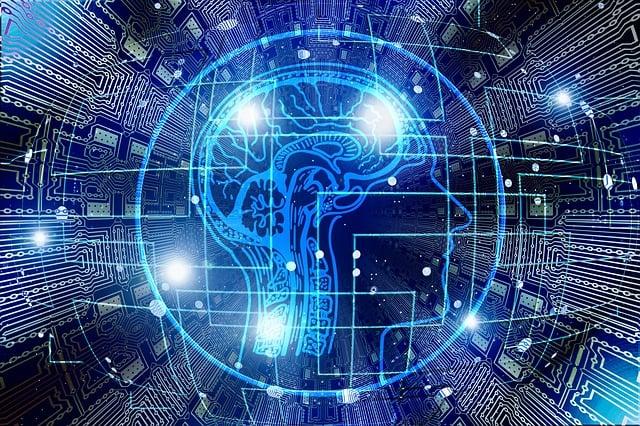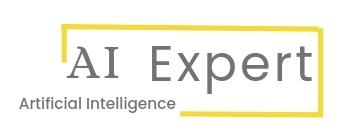
The goal of artificial intelligence is to create autonomous reasoning, learning, and acting systems, or intelligent agents. Research has been successful in creating efficient methods for addressing a variety of issues, from game play to medical diagnosis.
Artificial intelligence is a field of computer science that deals with creating machines that can think and act like humans. Technology researchers have developed a variety of techniques for solving problems, including game playing, medical diagnosis, and natural language processing.
In recent years, there has been a growing interest in the potential of artificial intelligence to revolutionize many aspects of our lives. Technology powered devices are already being used to automate tasks, provide personalized recommendations, and improve our understanding of the world around us. It seems it will have a bigger impact in our lives as it continues to develop.
Table of Contents
ToggleWhat is AI?
Artificial intelligence is a broad term that encompasses a wide range of techniques and technologies. Some common techniques are:
Machine learning (ML)
Which makes it possible for systems to learn without explicit programming. Machine learning systems are trained on large datasets of data, and they use this data to learn how to perform tasks such as classification, prediction, and decision making.
Deep learning (DL)
Is a subset of machine learning that utilizes artificial neural networks to process and learn from large volumes of data. It involves training deep neural networks with multiple layers to automatically extract high-level representations and features from the data, enabling the system to make accurate predictions and decisions. Deep learning has achieved remarkable success in various fields, including computer vision, natural language processing, and speech recognition.
Natural language processing (NLP)
A field of artificial intelligence that examines how computers and human language interact. NLP systems can be used to comprehend and generate text, translate languages, and provide answers.
Computer vision
A branch of artificial intelligence that studies how computers may perceive and comprehend their environment. Computer vision systems can be used to identify objects, track movement, and generate 3D models of the environment.
The History of AI
The field of artificial intelligence has its roots in the work of early computer scientists such as Alan Turing and John McCarthy. Turing is most known for his work on the Turing test, which measures a machine’s capacity to demonstrate intelligent conduct that is comparable to or indistinguishable from human intelligence.
McCarthy is credited to coin the term “artificial intelligence” in 1956. These programs were very simple by today’s standards, but they laid the foundation for the development of more sophisticated AI systems. In the 1970s, there was a period of disillusionment with artificial intelligence. This was due in part to the fact that many of the early programs did not live up to their promises.
However, research in artificial intelligence continued, and in the 1980s and 1990s, there was a resurgence of interest in the field. In recent years, there has been a major breakthrough in research. This breakthrough was the development of deep learning, which is a type of machine learning that uses artificial neural networks to learn from data.
Deep learning has led to the development of systems that can perform tasks that were previously thought to be impossible, such as playing games at a superhuman level and recognizing objects in images.
Artificial intelligence present in many aspects of our lives today. From the self-driving cars that are being developed to the virtual assistants that we use to control our smart homes, it is becoming increasingly pervasive. As technology continues to develop, it is likely to have an even greater impact on our lives in the years to come.
The Future of Artificial Intelligence
- Self-driving cars: Technology is used to navigate the road and avoid obstacles.
- Virtual assistants: Virtual assistants such as Alexa and Siri use artificial intelligence to understand our requests and provide us with information.
- Medical diagnosis: Technology powered systems are being used to diagnose diseases more accurately and efficiently and can help human doctors.
- Personalized education: Systems can be used to tailor education to the individual needs of each student.
- AI in Customer service: chatbots, self-service portals, and other technologies are helping businesses to provide faster, more personalized service to their customers.
- Financial trading: It can be used to analyze financial data and make trading decisions. Artificial intelligence-powered trading algorithms, machine learning models, and other technologies are helping traders to make faster, more informed decisions and to improve their trading performance which will help investors to make wise decisions and reduce their risks.
- Finance AI: It involves using advanced algorithms and machine learning models to analyze large volumes of financial data, automate processes, make predictions, and assist in decision-making. It can enhance risk assessment, fraud detection, portfolio management, customer service, and trading strategies. It enables financial institutions to improve efficiency, accuracy, and overall performance, ultimately leading to better financial outcomes and customer experiences.
- AI in Manufacturing: In manufacturing it can be used to automate manufacturing tasks, such as quality control and process optimization. This can help to improve productivity, efficiency, and safety.
- Agriculture: Can be used to monitor crops, improve yield, and prevent pests and diseases. This can help farmers produce more food with less resources.
- Energy: Can be used to optimize energy use, improve efficiency, and reduce emissions. This can help us transition to a cleaner and more sustainable energy future.
- Environmental protection: Can be used to monitor environmental conditions, track pollution levels, and identify potential hazards. This information can be used to protect the environment and ensure public safety.
- Space exploration: Can be used to control spacecraft, analyze data, and make decisions in real time. This technology can help us explore space more safely and efficiently.
- Artificial creativity: Can be used to generate new ideas, create new products, and design new experiences. This technology can help us create a more innovative and creative world.
- Social good: Can be used to solve social problems, such as poverty, hunger, and disease. This technology can help us create a more equitable world.
These are just a few more examples of the potential applications of artificial intelligence. As technology advances, we may expect to see even more inventive and transformational applications in the coming years.
The Ethical Challenges of AI
- Bias: These systems are educated on data, and if the data is biased, so will the system. This may result in discrimination against specific categories of people.
- Security: These systems can be hacked and utilized maliciously. This could include stealing data, launching attacks, or even causing physical harm.
- Accountability: Holding systems accountable for their behaviour can be tricky. This is because they are often complex and opaque, making it difficult to understand how they make decisions.
- Socioeconomic impact: The development and use of artificial intelligence could have a significant impact on society, including job losses, changes in the workforce, and new forms of inequality can come.
- Lack of transparency: Understanding how artificial intelligence systems make judgements can be tough. This is because they are often trained on large amounts of data and use complex algorithms.
- Lack of trust: Some people are concerned about the potential for this technology to become too powerful and pose a threat to humanity. This is a valid concern, and it is important to develop systems that are transparent and accountable.
- Regulation: As technology becomes more widespread, it is likely that governments will need to regulate its use. This is to ensure that artificial intelligence is used safely and ethically.
- Education: The development of this technology will require a new workforce with new skills. It is important to start educating people about artificial intelligence now so that they can be prepared for the jobs of the future.
Conclusion
It is a strong technology that has the potential to transform many parts of our life. With careful planning and development, this technology can be used to solve many of the world’s problems.You may also like:
Artificial Intelligence FAQs
AI is the ability of machines to think and learn like humans. AI systems can be used to perform a wide variety of tasks. It has the ability to transform numerous sectors and enhance our quality of life in numerous ways.
In the next 10 years, AI is likely to become even more powerful and widespread. We can expect to see AI-powered devices and applications more in our day to day life.
Improved decision-making, Increased productivity, Enhanced customer service, Reduced risk.
Job displacement: it is possible that it will automate many jobs that are currently done by humans. This could lead to widespread job displacement.
Bias: If data is biased, AI systems can be biased.
Lack of transparency: it is difficult to understand how they make decisions.
Security risks: AI systems are complex and can be vulnerable to hacking.
AI is a double-edged sword. It can solve problems or create new ones. We must use it wisely. It is important to carefully manage AI development to ensure that it is used for good.
Self-driving cars, Gaming, Supply Chain Optimization, Image and Video Analysis, Virtual assistants, Fraud detection, Product recommendations, Content creation, Customer service, Robotics, Space exploration, Speech Recognition, Financial Trading and many more.
Reactive machines, Limited memory, Theory of mind and Self-aware.
Different categories are General AI, Super AI and Narrow AI.
Accountability, Value Alignment, Explainability, Fairness and User Data Rights.
Narrow AI: referred to as Weak artificial intelligence, represents specialized systems designed to perform specific tasks within defined boundaries, lacking the broad cognitive capabilities of human intelligence.
Strong AI: known as Artificial General Intelligence (AGI), designed to have general intelligence to learn and understand new things, reason, and solve problems in a way that is similar to humans.




